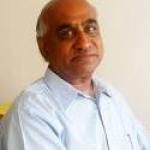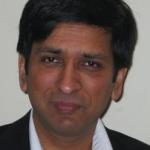

A massive expansion of the number of educated Indians is needed for Indian economic growth to continue at the desired rapid pace. This requires not just an expansion, but also a qualitative upgrading of Indian higher education. However, current trends – and the contrast with East Asia and China – cause a certain level of pessimism about when this will come about.
Nobelist Robert Fogel estimates from U.S. data that college-educated workers are three times as productive, and a high school graduate is 1.8 times as productive as a worker with less than a ninth grade education. India has a huge youth bulge; it is estimated that the number of people eligible for undergraduate college education at any given time will be at least 100 million over the next three decades. Properly educated, they will make India wealthy. If not, they will place a severe strain upon the country.
At the very least, it seems fair to aim at a rapid doubling of the fraction of youth that attend college to about 15 percent of the eligible population, amounting to an approximate 50 percent increase in the size of the higher education infrastructure. However, this badly understates the magnitude of the challenge, as much of the existing educational setup is substandard, limited by both stifling bureaucratic controls and by a shortage of quality academic personnel (the latter itself a legacy of previous years of neglect). Indeed, currently India has a triune system of higher education – uncannily like a caste system – of relatively small institutes (primarily research, with almost no teaching), universities (many more students, primarily teaching graduates) and colleges (even more students, primarily teaching undergraduates). Many in the first category are of international class and enshrine good academic values and practices, though they are a tiny fraction of the system. It is painful to note that even the Indian Institutes of Technology (IITs) barely do justice to the extraordinary caliber of students they recruit. Indeed, their students themselves see their education as being largely defined by the enormous selective pressure they face in getting into these institutes in the first place.
Thus far, higher education has been spoken of as training which is roughly appropriate to undergraduate education. However, global experience shows that it is not possible to divorce this from the research or knowledge production enterprise. At the very least, the teachers themselves have to be trained at the cutting edge. Moreover, even undergraduates are much better off when they have an active sense of where the frontiers of knowledge lie. This happens most naturally when they are taught by people who are engaged in the research enterprise themselves; we should want the best and the brightest to have access to this experience. Finally, knowledge production has important spillover effects in the modern economy captured by the term “knowledge economy.” For example, going forward, India’s software industry cannot lead globally if India produces forty Ph.D.s annually in computer science related areas and the U.S. produces 1,500. India will lack the highly trained personnel and the rapid access to cutting edge computer science to do so.
There is certainly a growing realization of these challenges. Major investments in new institutions and laws have been made by the federal (central) government between 2005 and 2008 and are likely to increase. For example, a half dozen or so Indian Institutes of Science Education and Research (IISERs) and about ten new IITs have been set up in this time period, as well as a very recently passed law which enshrines the right to education as a basic constitutional right. In addition, there has also been a welcome upgrading of academic salaries. The overall scale of the effort is unprecedented in India’s history and perhaps represents the “second wave of nation building” after the first, associated with the immediate post-independence period of the 1950s and 60s. It seems however, to still fall short by almost an order of magnitude. For example, though the number of people in India going in for higher education has increased from about a hundred thousand to about ten million between 1950 to the present, the expenditure in higher education nowhere reflects this. The needed 50 percent expansion will make this even worse. This suggests strongly that private resources will need to be mobilized to have any hope of making a serious dent in the problem.
But an equally serious problem is the creation of an institutional environment that promotes excellence beyond the confines of the specialist institutes, and indeed, even encourages them to reach for the stars. There is little question here that what is needed is a massive expansion of autonomy for educational institutions. They have to be given much more freedom to recruit students and faculty, remunerate the latter, and more generally set working conditions maximally conducive to their mission. It is possible that the private sector has a key role to play here by way of a demonstration effect. If even a few private Indian universities of global stature come into existence, they could do for the morale of the Indian education systems what Infosys, Wipro and Tata Consultancy Services (TCS) have done for the IT business. Currently, a massive push to free up the education sector is not evident, although it is encouraging that the current Human Resource Development (HRD) Minister appears seized of the urgency of the problem.
At this point, a pessimistic note must be sounded. All of education – higher education especially – is a personnel intensive business. For rapid growth in the Indian education sector to be feasible, a growing supply of qualified people is needed. Currently, there is little evidence that the stream of qualified people at its higher reaches is growing. Specifically in physics, no real change can be seen in the small numbers of people of international caliber that have traditionally joined the best Indian institutions. In the United States there is evidence of a decline in the numbers of gifted Indian students, trained in India, coming for advanced study. At Princeton, most recent Indian students have done their undergraduate work outside India and even they are now being completely outnumbered by the large influx of highly trained students from China, as well as Chinese students studying abroad. For example, this past year, Princeton made offers of admission to its Ph.D. program in physics to eight Chinese students, of whom five were trained in China. No offers were made to Indians. This disparity is now visible at the national research output level as well, and given the demographics, it will only grow in the years ahead.
In fairness, it should be noted that China has had a head start on economic reform and that gifted Indian students are likely being drawn away by business, which is good. But the fact that these effects have not been offset by the massive increases in nominal undergraduate enrollment in India is, sadly, an indicator that Indian higher education is in a serious state of crisis.
The way forward for India is clearly a monumental expansion in the scale of undergraduate and postgraduate education and an insistence on world class quality. Massive investments, both public and private, as well as changes in mindset and the harnessing of intrinsic local and global strengths could make this a reality over the next five to ten years.
T. V. Ramakrishnan is Emeritus Professor of Physics and DAE Homi Bhabha Professor at Banaras Hindu University, Varanasi. Email: tvrama2002@yahoo.co.in
Shivaji Sondhi is Professor & Director of Graduate Studies in the Department of Physics at Princeton University.Email: India.sondhi@Princeton.edu
India in Transition (IiT) is published by the Center for the Advanced Study of India (CASI) of the University of Pennsylvania. All viewpoints, positions, and conclusions expressed in IiT are solely those of the author(s) and not specifically those of CASI.
© 2009 Center for the Advanced Study of India and the Trustees of the University of Pennsylvania. All rights reserved.

